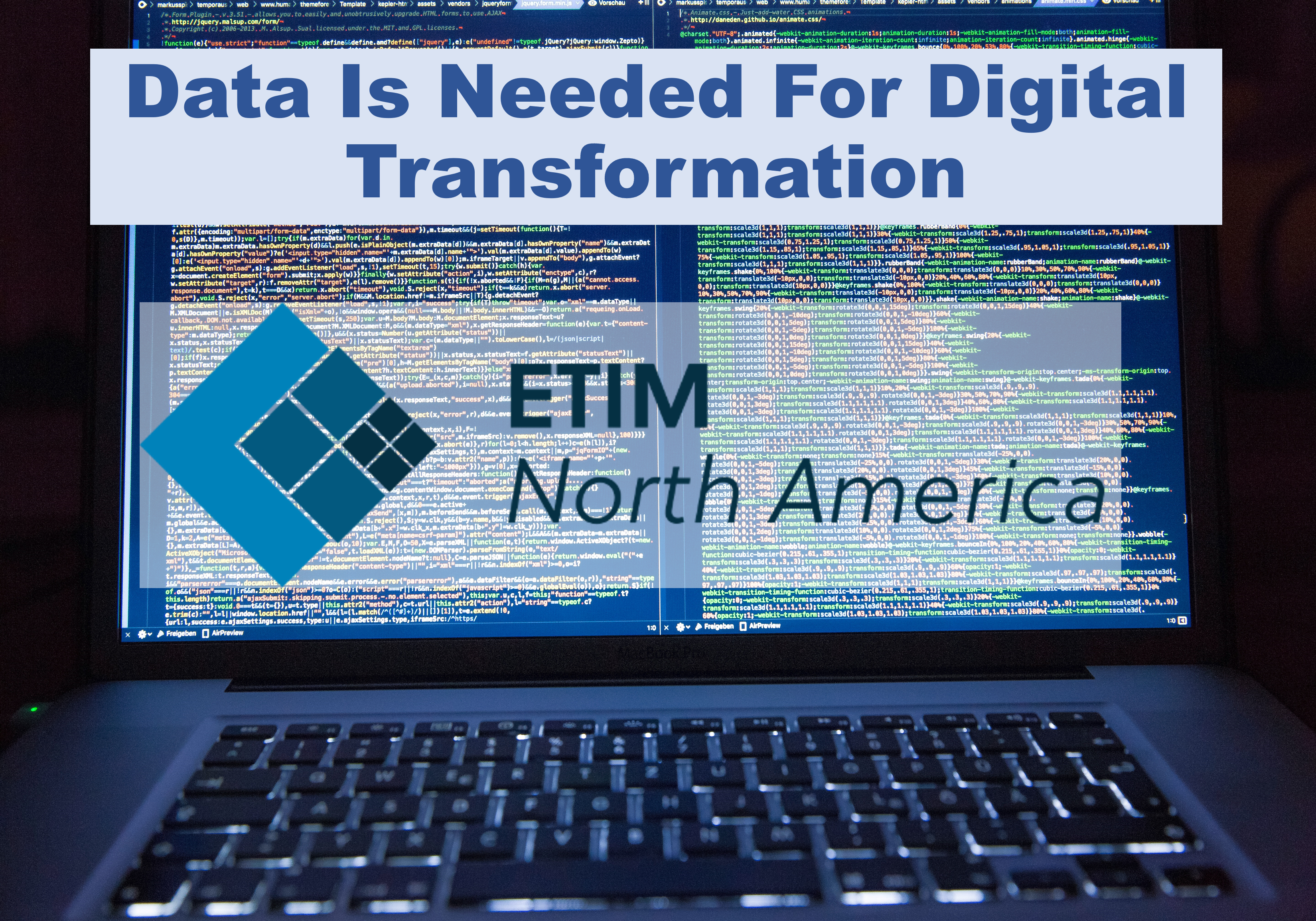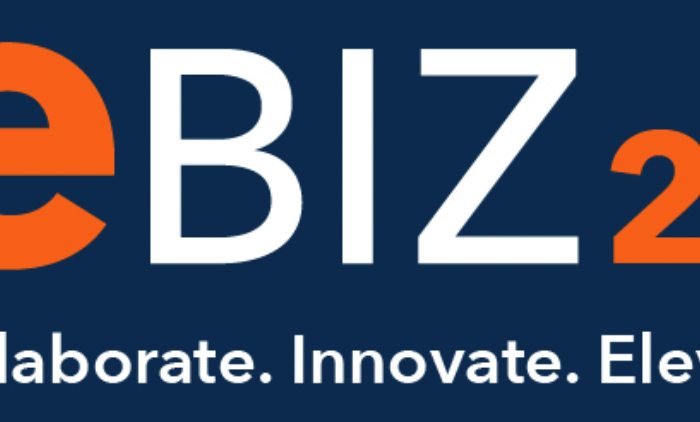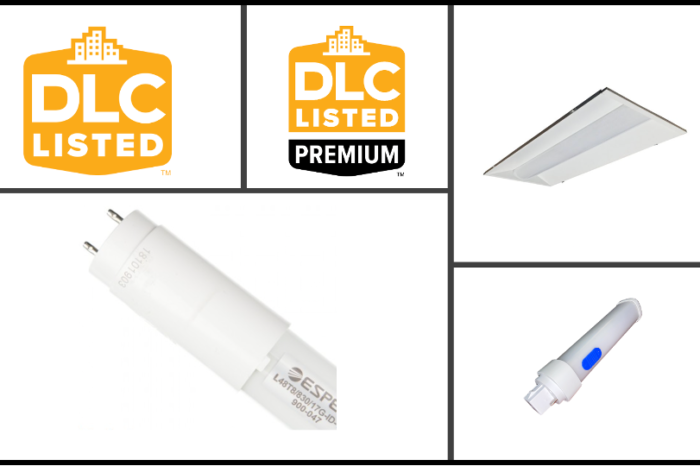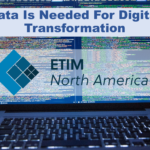ETIM Standards Can Power Digital Transformation
 Our recent posting on digital transformation got me thinking about data. Quality, matching data is the foundation of a digital initiative as, after all, data is what gets transmitted. This is needed for ERP systems and websites.
Our recent posting on digital transformation got me thinking about data. Quality, matching data is the foundation of a digital initiative as, after all, data is what gets transmitted. This is needed for ERP systems and websites.
For most distributors, the data that the electrical industry has used, especially in ERP systems, has been “sufficient.” Some will disagree, but the reality is, business has been transmitted within the industry, electronically, for many years AND distributors and contractors have access to product data.
But eCommerce needs, and more discerning “customers”, desire better.
To get beyond “sufficient” and get to “better”, the industry needs to strengthen its commitment to some basic data standards that are common within each product category (some definitions, information on features, specifics on values, etc …) while enabling distributors to have the information in a format that enables them to develop to deploy the product information as they see fit … not in pre-determined hierarchies.
Quite frankly, the European community figured this out years ago and developed ETIM. In the US we’d rather have something unique than say “let’s leverage what has already been developed.” (In other words, we prefer to reinvent the wheel!)
The European standard, which is now a global standard, ETIM, is accepted and being promoted in countries that represent 44% of electrical component sales!
Getting electrical industry data to where is is has been a long journey, and there is more to go, but it could be accelerated with industry, and association, support of ETIM.
A Little Data History
For many years Trade Service, a division of Trimble, was the sole data aggregator in the electrical industry for distributors. Distributors also gathered information from their manufacturers.
In the late ‘90’s, a group of manufacturers and distributors started discussing a different model. Eventually this grew to 20 manufacturers and distributors. The drivers were manufacturers.
This group realized that to increase their operational efficiency they needed more companies involved, which is when NEMA and NAED became involved, and IDEA was born.
When I was at IMARK. Steve Cunningham, at that time the president of IMARK, had a philosophy of “if it was good for members, it was good for the organization”, so we supported IDEA at the request of members. We held a summer leadership conference and promoted involvement in IDEA. Stuart Irby, president of The Stuart C. Irby company (now a Sonepar OpCo), who was an AD member, presented to the IMARK members. 34 signed up. After that I joined IDEA’s marketing committee. At the time IDEA was managed by NEMA’s staff.
In the early 2000’s Trade Service and IDEA sought a mutually beneficial relationship given Trade Service’s relationship, and importance, with contractors however, “stuff” (and here’s other posts from that time (IDEA with a Vision) another an article relating to the Trade Service relationship from 2008) happened and an opportunity to coalesce the industry for transactional (ERP) data was lost.
As originators of data, manufacturers were actively involved in IDEA with input from one of their customer bases (distributors.)
IDEA’s initial focus was a data warehouse (or a data pool). Over the years it evolved to being involved with standards organizations while initiating efforts to improve data quality. Mary Shaw guided, and was deeply involved, with IDEA’s data and process (i.e., EDI) standards initiatives for seventeen years. She was also the individual who initially exposed IDEA to ETIM during her tenure.
In late 2019 Mary left IDEA and in February 2020 she became the executive director of ETIM North America, an independent, non-profit, association committed to refining and promoting ETIM standards in multiple industries in North America.
We asked Mary to share “who and what” ETIM is and the benefits of data standards.
From Mary
“Who and What is ETIM?
ETIM International, a global non-profit association supporting 21 chapters in 23 countries, is responsible for the development and governance over a Classification Standard, or, a pre-defined set of descriptors, Feature/Value (Attribute/Value) combinations defined for families of technical products for a number of building industry trades. These classes (categories) of products, with their features and values, when applied to products within PIM’s, ERP systems and e-commerce websites, make it easier for the searcher or end user to find the right product.
The model is designed to be “flat” (not hierarchical) so that if can be applied at the lowest level of a company’s current or future PIM, e-commerce websites, or ERP installation. This enables the company that utilizes the information the flexibility of developing hierarchies (or taxonomies) that are appropriate for them rather than rely upon pre-set categorization. The features can be used as key words to filter searches within these systems, to bring up the values the user is looking for. When all suppliers provide their descriptors in this consistent format, it is easier for their products to easily fit into distributors search criteria structure, thus ensuring their products are found by the searcher (employees, customers, engineers, and product specifiers.)
Developed over 30 years ago and refined over time and with the input of thousands of people, the time-tested model has over 6,000 product classes, and covers Electrical, HVAC/Plumbing, Building Materials, Shipbuilding, Tools and Site Supplies, and even geometric characteristics for 3D modeling in BIM applications. The electrical industry is a core focus for ETIM and is used in each of these member countries. It was, and continues to be, developed by product experts. These are subject matter experts, working collaboratively from manufacturers and distributor, who know the products, know how they are used and how their users search for these items. This is to ensure the products are properly defined so as to avoid errors. The goal is to provide the customer a quality search experience and enable them to find what they need. This generates significant accuracy benefits for all parties.
ETIM North America, the newest chapter of ETIM International, is responsible for refining the ETIM model and promoting adoption in North America (United States, Canada, and Mexico).
Founded in February 2020, ETIM North America is a non-profit organization (501c6). In only 2 ½ years the association has grown to 36 members focused in four product categories (Power Distribution & Automation Controls, Wiring Devices / Lighting Controls, Wire / Cable and Conduit / Fittings). These categories align with the membership and new categories are developed as the association recruits new members.
Most of the national distribution chains are members of ETIM NA as they are already using ETIM for their international customers.
Our goal is to give the North American companies a better format for sharing product descriptors by utilizing an already robust, developed, and superior solution, that can be used domestically and globally.
ETIM North America is governed by a Board and operated by an Executive Director who handles recruitment, marketing, coordinates the Product Expert Groups and manages changes to attributes within classes in the broader ETIM system. North America is currently on the ETIM International board as vice president, as ETIM International recognizes the importance of the North American market within the ETIM ecosystem.
The ETIM model is designed to be inclusive and supportive of the industry ecosystem, facilitating product information from manufacturers to reps, down to distributors and then to contractors, engineers, and other influencers. For this reason, ETIM North America is technology-system agnostic. ETIM North America seeks to involve all data pools / data warehouses, distributor ERP systems and is open to PIM, eCommerce and other technology systems that facilitate communications flow and can support ETIM adoption as ETIM recognizes that these tools are needed by all within the channel.
 As many know, ETIM was originally managed by IDEA and, for various reasons, IDEA and ETIM parted ways. ETIM International eventually desired ETIM North America to be governed by a non-profit entity.
As many know, ETIM was originally managed by IDEA and, for various reasons, IDEA and ETIM parted ways. ETIM International eventually desired ETIM North America to be governed by a non-profit entity.
Shortly after its formation, ETIM North America invited IDEA to become re-engaged in the ETIM standard refinement process and offered a Board seat as well as a leadership role in guiding adoption in the electrical sector.
This was the status until recently when IDEA introduced its Harmonized Data Model (HDM) which was originally positioned as a standard and then re-phrased as a “model”. Whether a “standard” or a “model”, the result is that this is a competing classification to the ETIM standard and hence represented a conflict of interest. Being a Board member there is an inherent obligation of a Board member to not compete with the organization. For this reason, IDEA was removed from the Board, however, IDEA remains a Technology Solution Provider member in ETIM North America, consistent with other data pools / data warehouses.
Accelerating digital transformation in the electrical industry is best achieved when the industry can come together around one standard that is robust yet flexible to use and is accessible by all.
As an independent organization powered by consensus from its members who develop the standards, ETIM North America is best positioned to achieve this. The model has been developed and refined over 30 years. Further refinement to meet North American needs can occur on a timely basis. The model enables each user (manufacturer, distributor, software company) to adapt the classes into their desired hierarchy.
To accelerate adoption, ETIM North America proposes that IDEA join forces with ETIM North America, map UNSPSC and CAS/PAS categories to ETIM categories and collectively request subject matter experts from manufacturers and distributors to further refine for North American needs. These subject matter experts could come from NEMA, NEMRA, NAED, EFC, NECA, IEC or manufacturers and distributors not affiliated with these organizations. Further, with NEMA, NAED and IDEA’s assistance, ETIM North America can coordinate with key industry technology partners to facilitate understanding of ETIM and integration into their platforms.
By collaborating, as an industry, we can enhance the ETIM model to fully support the products in the North American market.
We feel the current model is at least 20% ready to be used in North America (some categories are much more), but we need help to accelerate refinement. We have reviewed and/or translated, and finalized, over 100 classes containing over 5,000 elements, with another 65 classes to be finalized, and another 700 to be reviewed this year.
The core of ETIM North America is its Direct Members, who refine / develop the model and actively participate on our Product Expert Groups. Standards, historically, are collaboratively developed within industry’s via non-profit associations, who bring together industry members from all areas of the channel, to work together for the benefit of the entire industry.
To learn more about ETIM North America, visit our website, www.etim-na.org or contact me for a more in-depth overview and a technical demonstration of the CMT … the ETIM Classification Management Tool.”
Some Takeaways
Data is integral to manufacturers and distributors successfully transacting business. Nowadays, it is even more important as it must seamlessly flow from manufacturers through their reps to distributors while being readily available to contractors, engineers and other influencers who need it to use an array of software tools. To digitally transform, let alone evolve, data needs to evolve and there needs to be basic standards for product attributes … and it must seamlessly be able to be transmitted across software systems and geographic boundaries to be cost-effective for all.
This is one of the reasons why I’ve been involved in at least understanding some of the dynamics given that, without data, revenue generation is difficult.
The role of a standards organization is to consider all users … from the manufacturer down to the data “user” and to ensure that the standard is useable by all. Therefore, associations typically drive standards as they enable all to join.
So, how has ETIM done?
Full disclosure … I am on the Board of Directors of ETIM North America.
Here’s some insights on what ETIM North America has achieved in only 2 ½ years:
- 100 classes have been finalized with another 65 soon to be.
- Another 500-700 classes are projected to be completed by the end of the year.
- There are classes being reviewed in 4 major product categories already.
- Approximately 500,000 products are ETIM classified in IDEA.
- Most of the national distribution chains are members (Graybar, WESCO, Sonepar, Rexel Canada (and Rexel is involved globally).
- Manufacturer representatives are represented through NEMRA and Trade Tech Solutions.
- IMARK is a member, representing over 600 independent distributors.
- All 3 data pools / warehouses (Distributor Data Solutions, IDEA and Trimble) are members.
- ETIM is the only standard that has more than 1 data pool supporting it!
- ETIM is the only standard that manufacturers who interact internationally can utilize to support their overall business, helping them allocate internal costs across their business’ rather than country-specific initiatives.
- According to EMR Online, which tracks global electrical industry revenues, regardless of channel, the 23 countries where ETIM is present represent 43.8% of electrical component sales!
IDEA’s support of ETIM North America is much appreciated and they highlight the organization on their site and emphasize that it is “good for the entire industry.”
ETIM North America has achieved much with limited resources in a short time-period marked by COVID, supply chain disruption and labor challenges for manufacturers and distributors to name a few. With a little more assistance, and industry engagement, the model can be further built out to accelerate the digital supply chain benefits that many seek and facilitate eCommerce activities, and then the data repositories / data pools can share the information for others to consume and utilize as they desire.























